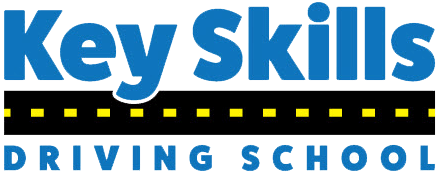

Driving requires you to bring your whole game -- you’ll be using your hands, legs, feet, arms, head, eyes, and ears. They all play a role to keep you and others safe.
You also need to bring your mind. Your mind maybe the most important part of good driving, because it makes sense of what’s going on. Receiving excellent driver training in Phoenix, Virginia help you develop the skills you need.
But your mind can be ready to go even before your first lesson.
You need to see everything, and you need to make sure you perceive things accurately. You can train your perception, because it can be inaccurate. Driving is not the time to see only what you expect to see.
Here’s a little test to see how your perception is. There’s no penalty for getting it wrong.
Did you see it the first time? Most people don’t.
Humans are wired to see what we want or expect to see. It’s part of our psychology, and most of the time, it probably doesn’t matter much. But remember -- expectations can lead us to miss significant parts of a situation. That can cause trouble.
In the Awareness Test (which has a driver’s ed piece -- watch for cyclists!) you were told to look for the number of passes the team in white made. You then focused on what you were told to look for -- it was like a rule.
Being good viewers, you counted. Because you were focused on the team in white, you couldn’t count the number of passes the team in black made, and you didn’t see the bear.
While driving, you can’t focus on just one thing. You need to avoid counting the passes the team in white made only. You have count the passes made by the other team, and notice that the bear is there also.
You must be aware of the entire situation.

Most accidents take place because one -- or more -- drivers failed to see something soon enough. They were unable to avoid it. Most of the time, that happens because another driver changes something -- lane, speed, or direction. They were either paying no attention, or had become focused on something else.
The active portion of the awareness test -- when both teams were passing the balls, and the bear moonwalked across the screen -- lasted for 14 seconds. In a car, a lot can happen in 14 seconds.
A car traveling 55 mph travels 80 feet per second; during the time of the test, your car could go almost 1,120 feet -- almost 4 football fields long. It takes about ¾ of a second to perceive and process a hazard -- that’s about 60 feet right there.
Your brain then has to tell your foot to hit the brakes. That message takes another ¾ of a second. Another 60 feet.
And at that speed it will take around 270 feet to come to a stop -- another football field, almost.
And that’s if you’re paying attention to the event requiring the brakes.
When you text, you’re as focused on the screen as you were on the passes made by the team in white. That’s why texting and driving is dangerous.
But imagine all the other issues with driving and misperceiving something.
Never stare while you’re driving. You will miss the moonwalking bears in the side streets. To observe actively and perceive accurately,do the following:
We react to larger objects faster than we do to smaller ones. The car gets noticed before the cyclist or the pedestrian.
Be aware of traffic in crossroads. Don’t count on their stopping even if there’s a stop sign or red light in their direction -- on the other hand, don’t stop, either. Just be aware that some people are clueless that way.
You can begin your driver perception skills long before you get your permit. And parents can begin this with their teens before driver education starts.
In a commentary drive, you narrate what you’re doing as you travel. Narrate trips with your parents, and they can confirm what you perceived accurately, and identify other items which you should have noticed, as well as why it matters.
Parents can even demonstrate commentary drives before their teens do.
You can record the audio and even the video of the drives, allowing you to review them at home.
A good commentary drive should include the following items:
Commentary drives can help you develop your perception. They also can give the parents of teen drivers a stronger role in the driving education of their children.
Once you practice your perception skills, you will be even more ready to drive than before. Perception is a skill which can be developed even before you take driving lessons around Chandler, Tempe, or Phoenix.
As you work through your driver training -- both in classes and with your parents -- you can do everyone a favor and perceive things accurately. By being aware of how your brain perceives what comes through your eyes, you will be a great driver.